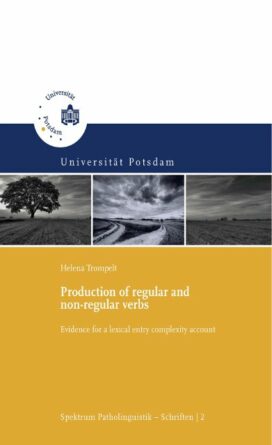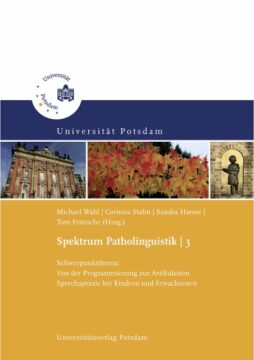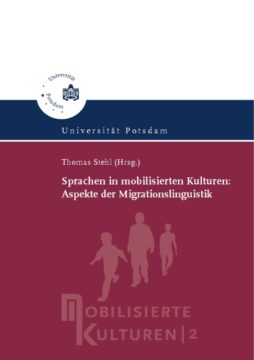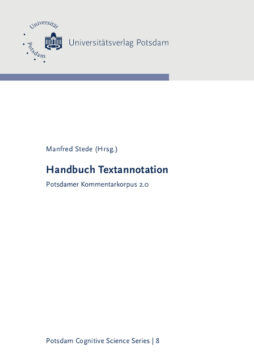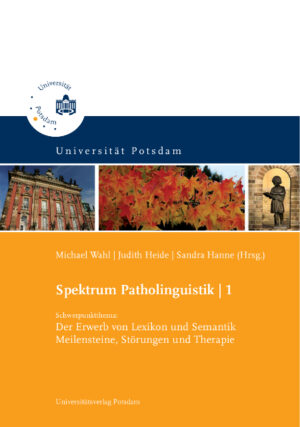The incredible productivity and creativity of language depends on two fundamental resources: a mental lexicon and a mental grammar. Rules of grammar enable us to produce and understand complex phrases we have not encountered before and at the same time constrain the computation of complex expressions. The concepts of the mental lexicon and mental grammar have been thoroughly tested by comparing the use of regular versus non-regular word forms. Regular verbs (e.g. walk-walked) are computed using a suffixation rule in a neural system for grammatical processing;non-regular verbs (run-ran) are retrieved from associative memory. The role of regularity has only been explored for the past tense, where regularity is overtly visible. To explore the representation and encoding of regularity as well as the inflectional processes involved in the production of regular and non-regular verbs, this dissertation investigated three groups of German verbs: regular, irregular and hybrid verbs. Hybrid verbs in German have completely regular conjugation in the present tense and irregular conjugation in the past tense. Articulation latencies were measured while participants named pictures of actions, producing the 3rd person singular of regular, hybrid, and irregular verbs in present and past tense. Studying the production of German verbs in past and present tense, this dissertation explored the complexity of lexical entries as a decisive factor in the production of verbs. Regularität spielt eine entscheidende Rolle bei der Produktion von Verben. Zweiroutenmodelle nehmen an, dass regelmäßige Formen aus Stamm und Suffixen zusammengesetzt werden und unregelmäßige Verben als ganze Form im mentalen Lexikon gespeichert sind. Ziel der Dissertation war eine ausführliche Untersuchung der Repräsentation von regelmäßigen und unregelmäßigen Verben im Deutschen sowie der morphologischen Prozesse bei ihrer Produktion. Dazu wurden drei Typen von Verben im Deutschen untersucht: Regelmäßige Verben (z.B. lachen) haben nur einen Stamm, irreguläre Verben (z.B. graben) haben mehrere Stämme und ihre Formen sind daher unvorhersagbar. Hybride Verben (z.B. singen) haben regelmäßige Formen im Präsens und unregelmäßige, unvorhersagbare im Präteritum. Besondere Berücksichtigung fand daher das Tempus bei der Generierung von Verben. Artikulationszeiten in einer Serie von Bild-Wort-Interferenzexperimenten lassen vermuten, dass Regularität nicht durch abstrakte generische Knoten repräsentiert ist wie es z.B. für Genus angenommen wird. Die Artikulationszeiten von allen drei Typen von Verben in einem weiteren Bildbenennungsexperiment haben gezeigt, dass Regularität eine Eigenschaft des gesamten Lexikoneintrags eines Verbs ist und nicht von individuellen Wortformen. Die präsentierten Daten sind eine Herausforderung für das Zweiroutenmodell (Pinker,1999), sie sind jedoch mit einem Ansatz vereinbar, der komplexe Lexikoneinträge für unregelmäßige Verben annimmt.
Helena Trompelt
Helena Trompelt (eds.)
Evidence for a lexical entry complexity account
ISBN: 978-3-86956-061-8
173 pages
Release year 2010
Series: Spektrum Patholinguistik - Schriften , 2
12,00 €
Non-taxable transaction according to § 1 (1) UStG/VAT Act in combination with § 2 (3) UStG/VAT Act a. F. Providing this service, the University of Potsdam does not constitute a Betrieb gewerblicher Art/Commercial Institution according to § 1 (1) No. 6 or § 4 KStG/Corporate Tax Act. If the legal characterization of our business is changed to a commercial institution subsequently, we reserve the right to invoice VAT additionally. zzgl. Versandkosten
The incredible productivity and creativity of language depends on two fundamental resources: a mental lexicon and a mental grammar. Rules of grammar enable us to produce and understand complex phrases we have not encountered before and at the same time constrain the computation of complex expressions. The concepts of the mental lexicon and mental grammar have been thoroughly tested by comparing the use of regular versus non-regular word forms. Regular verbs (e.g. walk-walked) are computed using a suffixation rule in a neural system for grammatical processing;non-regular verbs (run-ran) are retrieved from associative memory. The role of regularity has only been explored for the past tense, where regularity is overtly visible. To explore the representation and encoding of regularity as well as the inflectional processes involved in the production of regular and non-regular verbs, this dissertation investigated three groups of German verbs: regular, irregular and hybrid verbs. Hybrid verbs in German have completely regular conjugation in the present tense and irregular conjugation in the past tense. Articulation latencies were measured while participants named pictures of actions, producing the 3rd person singular of regular, hybrid, and irregular verbs in present and past tense. Studying the production of German verbs in past and present tense, this dissertation explored the complexity of lexical entries as a decisive factor in the production of verbs. Regularität spielt eine entscheidende Rolle bei der Produktion von Verben. Zweiroutenmodelle nehmen an, dass regelmäßige Formen aus Stamm und Suffixen zusammengesetzt werden und unregelmäßige Verben als ganze Form im mentalen Lexikon gespeichert sind. Ziel der Dissertation war eine ausführliche Untersuchung der Repräsentation von regelmäßigen und unregelmäßigen Verben im Deutschen sowie der morphologischen Prozesse bei ihrer Produktion. Dazu wurden drei Typen von Verben im Deutschen untersucht: Regelmäßige Verben (z.B. lachen) haben nur einen Stamm, irreguläre Verben (z.B. graben) haben mehrere Stämme und ihre Formen sind daher unvorhersagbar. Hybride Verben (z.B. singen) haben regelmäßige Formen im Präsens und unregelmäßige, unvorhersagbare im Präteritum. Besondere Berücksichtigung fand daher das Tempus bei der Generierung von Verben. Artikulationszeiten in einer Serie von Bild-Wort-Interferenzexperimenten lassen vermuten, dass Regularität nicht durch abstrakte generische Knoten repräsentiert ist wie es z.B. für Genus angenommen wird. Die Artikulationszeiten von allen drei Typen von Verben in einem weiteren Bildbenennungsexperiment haben gezeigt, dass Regularität eine Eigenschaft des gesamten Lexikoneintrags eines Verbs ist und nicht von individuellen Wortformen. Die präsentierten Daten sind eine Herausforderung für das Zweiroutenmodell (Pinker,1999), sie sind jedoch mit einem Ansatz vereinbar, der komplexe Lexikoneinträge für unregelmäßige Verben annimmt.
Recommended Books
-
 2010
2010Sandra Hanne, Corinna Stahn, Michael Wahl, Tom Fritzsche, Judith Heide
Schwerpunktthema: Von der Programmierung zur Artikulation
7,50 €Non-taxable transaction according to § 1 (1) UStG/VAT Act in combination with § 2 (3) UStG/VAT Act a. F. Providing this service, the University of Potsdam does not constitute a Betrieb gewerblicher Art/Commercial Institution according to § 1 (1) No. 6 or § 4 KStG/Corporate Tax Act. If the legal characterization of our business is changed to a commercial institution subsequently, we reserve the right to invoice VAT additionally.
zzgl. Versandkosten
Add to cart -
 2011
2011Sprachen in mobilisierten Kulturen
35,00 €Non-taxable transaction according to § 1 (1) UStG/VAT Act in combination with § 2 (3) UStG/VAT Act a. F. Providing this service, the University of Potsdam does not constitute a Betrieb gewerblicher Art/Commercial Institution according to § 1 (1) No. 6 or § 4 KStG/Corporate Tax Act. If the legal characterization of our business is changed to a commercial institution subsequently, we reserve the right to invoice VAT additionally.
zzgl. Versandkosten
Add to cart -
 2016
2016Handbuch Textannotation
10,50 €Non-taxable transaction according to § 1 (1) UStG/VAT Act in combination with § 2 (3) UStG/VAT Act a. F. Providing this service, the University of Potsdam does not constitute a Betrieb gewerblicher Art/Commercial Institution according to § 1 (1) No. 6 or § 4 KStG/Corporate Tax Act. If the legal characterization of our business is changed to a commercial institution subsequently, we reserve the right to invoice VAT additionally.
zzgl. Versandkosten
Add to cart -
 2008
2008Wahl, Michael; Hanne, Sandra; Heide, Judith (Hrsg.)
Schwerpunktthema: Der Erwerb von Lexikon und Semantik, Meilensteine, Störungen und Therapie
7,50 €Non-taxable transaction according to § 1 (1) UStG/VAT Act in combination with § 2 (3) UStG/VAT Act a. F. Providing this service, the University of Potsdam does not constitute a Betrieb gewerblicher Art/Commercial Institution according to § 1 (1) No. 6 or § 4 KStG/Corporate Tax Act. If the legal characterization of our business is changed to a commercial institution subsequently, we reserve the right to invoice VAT additionally.
zzgl. Versandkosten
Add to cart
Publisher Info
Contact
Potsdam University Library
University Press
Am Neuen Palais 10
14476 Potsdam
Germany
verlag@uni-potsdam.de
0331 977-2094
0331 977-2292

